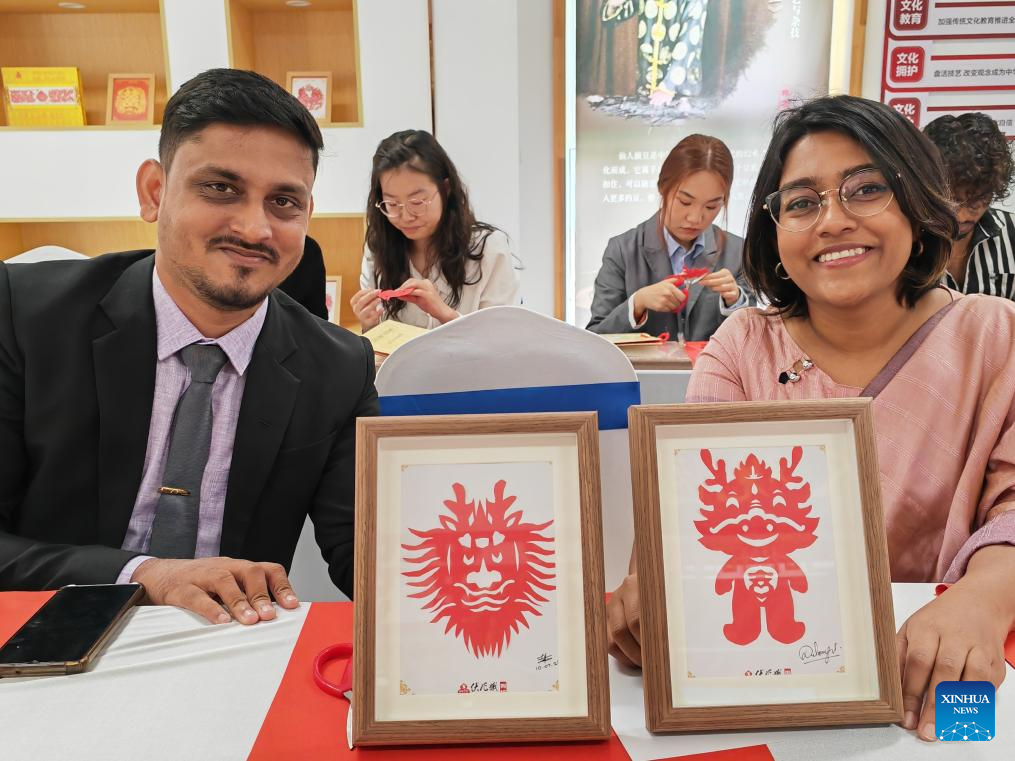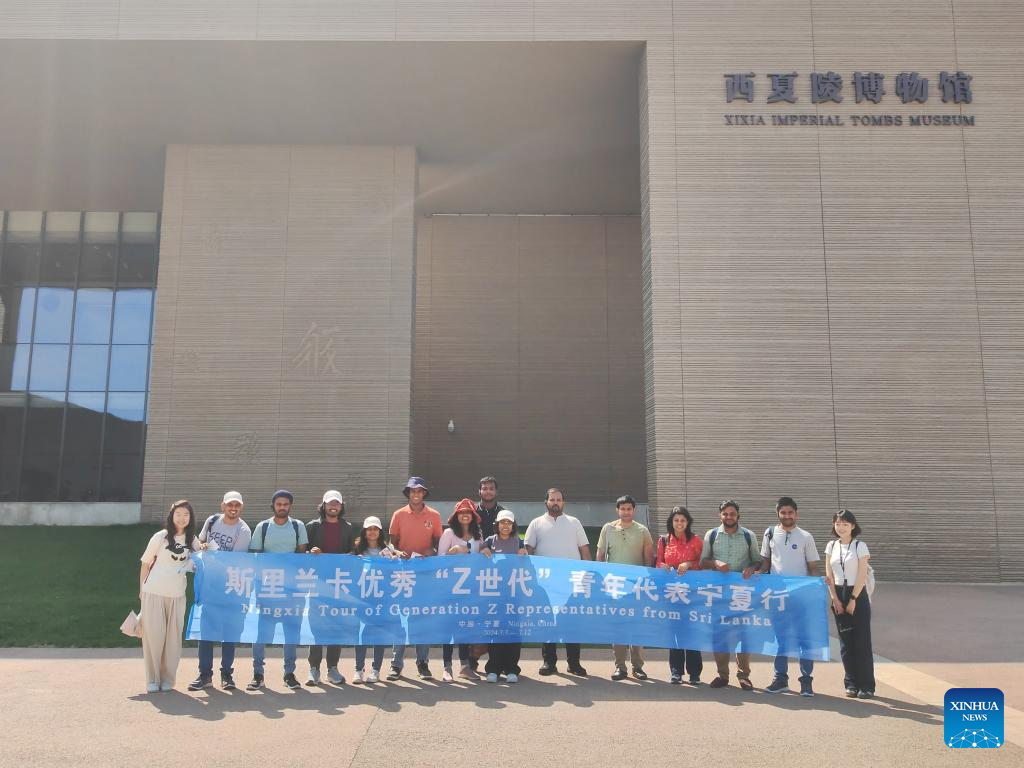
Sri Lankan youth show their paper-cutting works in Yinchuan, northwest China's Ningxia Hui Autonomous Region, July 10, 2024. (Xinhua/Liu Hai)
YINCHUAN, July 15 (Xinhua) -- A ceramic bowl shattered on the ground with a resounding crash, sending fragments flying in all directions.
The bowl had been thrown by Vimasha Weerawansha, a 23-year-old student from Sri Lanka who was visiting China, a sign not of anger but good intention.
"Smashing a bowl after drinking feels like throwing away all the bad energy," Weerawansha said. She was partaking in this folk custom at a local drink stand at the Zhenbeibu West China Film Studio, in northwest China's Ningxia Hui Autonomous Region.
This gesture, steeped in traditional Chinese culture, in which visitors consume a bowl of liquor and then shatter the bowl, is believed to bring peace and safety.
On Friday, a delegation of Gen Z representatives from Sri Lanka wrapped up their five-day visit to Ningxia. The young delegates explored various cultural and tourism landmarks, deeply immersing themselves in the essence of traditional Chinese culture.
The youngest member of the delegation, which was comprised entirely of individuals from the post-90s generation, was Kavinu Kushal Sallay, aged 20.
"The past few days have given us the opportunity to visit many significant sites and experience the culture and people of the region first-hand," Sallay said.
One of the highlights of their trip was Yuanshi Winery. As they toured the location, the young visitors asked many questions, including why there were so many stone elements in the winery, like stone walls, bricks, tiles and pavements.
The guide explained that the winery was once an abandoned mining area. From 1998 to 2008, it took a decade to transform the site, with nearly 20,000 tonnes of cobblestones from the nearby Gobi Desert used in the construction of the main structures.
"It's hard to imagine that this beautiful winery was a deserted sand quarry just over a decade ago," Sallay said.
The youth delegation also visited the winery's underground cellars, learning about the diverse varieties, hues and aromas of the wines produced in Ningxia. Ciara Mandulee Mendis, a 33-year-old assistant secretary to Sri Lanka's president, bought a bottle and admired the winery's creative use of recycled grapevines as roof decorations.
During their tour, they were also captivated by the sight of visitors dressed in Hanfu, a type of traditional Chinese attire.
At the Fuxian Academy, in the city of Wuzhong, the foreign youngsters donned Hanfu themselves, experienced the guqin, a traditional Chinese musical instrument, and reveled in the elegance of ancient Chinese music.
Their immersive experiences also encompassed paper-cutting and movable-type printing. D.T.I. Peramunugamage, vice treasurer of the Sri Lanka-China Buddhist Friendship Association, crafted a lively little dragon under the guidance of Li Jian, a national-level intangible cultural heritage project inheritor in paper-cutting.
"Paper-cutting is very challenging, but it teaches us patience," Peramunugamage said. "This little dragon is very handsome and might bring me good luck."
While engaging with movable-type printing, Ciara Mandulee Mendis decided to print two Chinese characters by hand that symbolize good fortune. "I want to print the characters for 'love' and 'happiness,'" Mendis said.
"Both Sri Lanka and China boast long histories and rich cultures," she said. "Cultural exchanges and people-to-people connections, like this youth program, play an important role in this context." ■

A delegation of Gen Z representatives from Sri Lanka poses for a group photo in front of the Xixia Imperial Tombs Museum in Yinchuan, northwest China's Ningxia Hui Autonomous Region, July 9, 2024. (Xinhua/Wang Xuefei)

Sri Lankan and Chinese youth learn paper-cutting in Yinchuan, northwest China's Ningxia Hui Autonomous Region, July 10, 2024. (Xinhua/Liu Hai)



